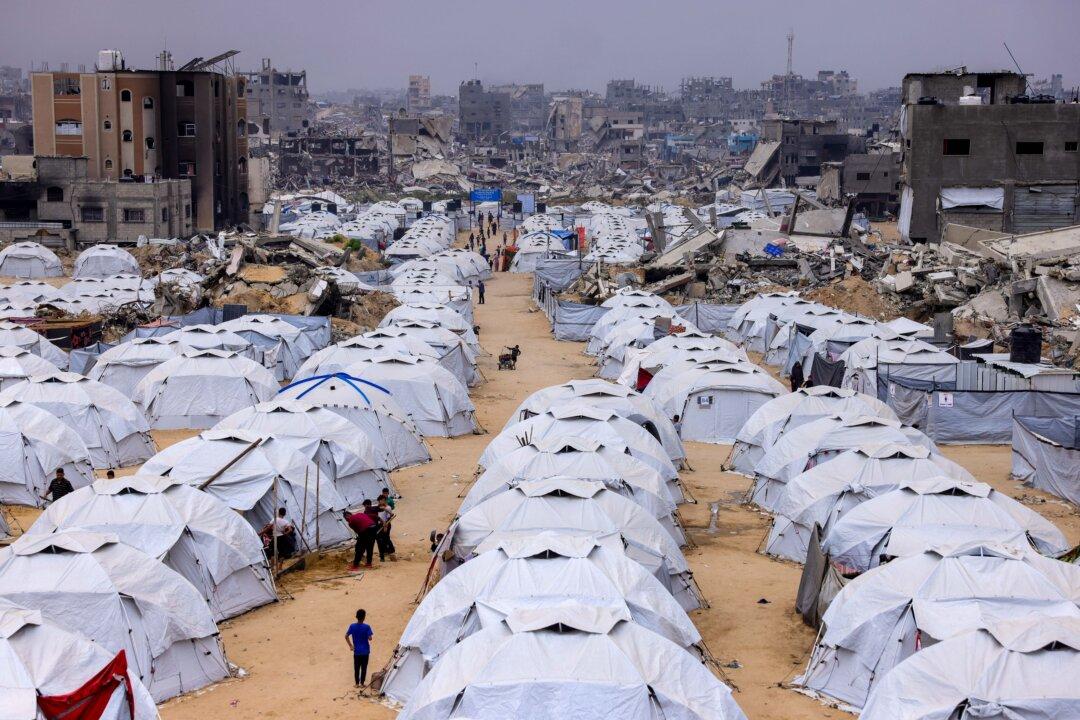Iran launched what was said to be the largest ballistic missile attack in history at Israel on Oct. 1. Israel reported minimal damage and casualties after managing to shoot down most of the missiles.
Virtually the entire nation of 10 million people took to their bomb shelters and safe rooms for about an hour on the evening of Oct. 1 after Iran launched the barrage, which Israel’s leadership said was 181 missiles. They stayed there until the Israel Defense Forces (IDF) issued an all-clear.
Two U.S. naval destroyers, the USS Cole and the USS Bulkeley, assisted in shooting down Iran’s missiles headed into Israel, Pentagon spokesperson Maj. Gen. Pat Ryder told reporters at the Department of Defense. They launched about a dozen interceptors, he said.
Iran’s barrage came after Israel’s string of attacks directed at Hezbollah, Iran’s proxy in Lebanon. Two weeks ago, thousands of pagers and handheld radios belonging to Hezbollah leaders and officers exploded, killing some and wounding or maiming hundreds.
On Sept. 27, Israel’s air force took out Hassan Nasrallah, the terror group’s leader for more than 30 years, with an air attack as he met with other top Hezbollah officers in an underground bunker in Hezbollah’s stronghold in suburban Beirut, Lebanon.
Other air attacks targeted Hezbollah commanders. Yet more took out a large amount, as much as half, of Hezbollah’s formidable and Iranian-provided missile stores. On Sept. 30, Israel began a ground operation on its northern border against Hezbollah.
Iran’s missile attack came as a response to all that and to the July 31 assassination of Hamas leader Ismail Haniyeh, presumably by Israel, although it hasn’t taken responsibility for the killing. He was in Tehran attending the inauguration of Iran’s new president.
Iran’s elite Islamic Revolutionary Guards Corps (IRGC) stated that it launched the Oct. 1 strike and warned that if Israel retaliates, Tehran’s response will be “more crushing and destructive,” Iranian state TV reported.
“After a period of restraint, Iran has targeted the heart of the occupied territories with tens of missiles following the martyrdom of [Hamas leader] Ismail Haniyeh ... the intensification of the Zionist regime’s attacks on Lebanon and Gaza, the martyrdom of Hezbollah leader Hassan Nasrallah and (of) Guards Commander Abbas Nilforoushan,” the IRGC stated.
A senior Iranian official told Reuters the missile launches were ordered by Iran’s supreme leader, Ayatollah Ali Khamenei, who has remained in a secure location since Israeli airstrikes on Beirut killed Nasrallah last week.
U.S. national security adviser Jake Sullivan said Washington had received no reports of Israeli casualties but was investigating reports of the death of one Palestinian in Jericho.
The IDF’s spokesman, Rear Adm. Daniel Hagari, said he was not aware of any casualties from the missile volley. There were a few hits in the center and south of the country, he said.
“We are on high alert both defensively and offensively,” he said in a TV broadcast. “We will defend the citizens of the state of Israel. This attack will have consequences. We have plans, and will operate at the place and time we decide.”
The attack was more intense than a previous one on April 13, when Iran retaliated for an Israeli strike on the Iranian Consulate in Damascus that killed seven IRGC officers. Iran launched hundreds of projectiles. However, many were relatively slow-flying drones and cruise missiles, which took up to nine hours to reach Israel. They were shot down with assistance from U.S., UK, French, and Jordanian forces. Israel did not retaliate.

However, the more recent attack was far more threatening. Ballistic missiles can reach Israel in 12 minutes from Iran, giving far less time for Israel’s air raid sirens to sound and for people to get to safety.







